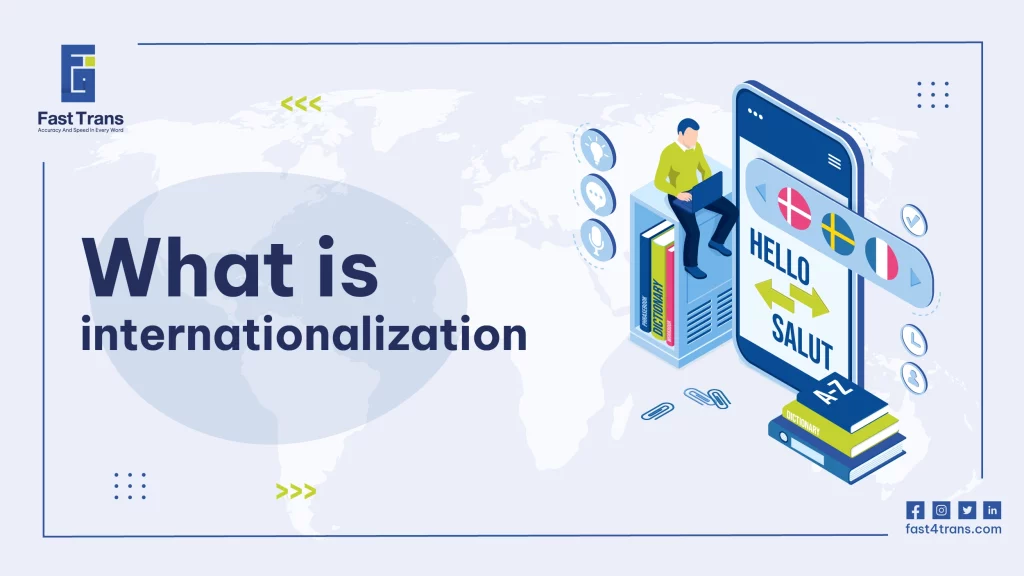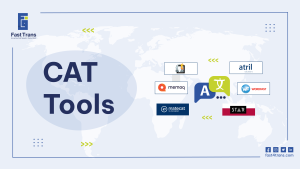Arabic internationalization (i18n) is a strategic process that prepares businesses for expansion into Arabic-speaking markets by adapting products, websites, and software to local language, cultural, and technical nuances. By addressing challenges like right-to-left text, cultural preferences, and local currencies early on, businesses can boost user experience, improve visibility on search engines, and increase revenue in the Middle East and North Africa. Arabic Internationalization Benefits not only saves localization costs but also strengthens customer loyalty, paving the way for successful growth and market investment.
What is Arabic internationalization (i18n)?
Symbolized as i18n, Arabic internationalization can be considered a coding tool, a process, or an approach where the end goal is to benefit brands, organizations, or businesses to grow and reach a wider Arabic-speaking audience by allowing them to be ready to function effectively in Arabic-speaking markets.
In other words… increasing revenue, reaching more Arabic-speaking customers, and saving costs.
Arabic i18n involves the development of a product or software to pave the way for easy localization (l10n) into Arabic.
Localization involves adapting a product to support the Arabic language and culture.
Let’s say you have a business running in Egypt and it’s going really well. You’re thinking of expansion into other Arab countries, such as Saudi Arabia or the UAE. How you approach Egyptian customers won’t be the same as how you attract other Arabic-speaking audiences.
That’s because, while they all share Arabic as a common language, they use different currencies, have unique markets and competitors, speak varying Arabic dialects, and follow distinct cultural practices.
Therefore, the process of Arabic internationalization steps in to pave the way.
Arabic Internationalization Benefits
Although internationalization for Arabic markets could consume lots of resources, from hiring a skilled marketing team to professional localizers, it can pay off in the end by offering businesses a multitude of exciting opportunities within the Arabic-speaking world.
Let’s explore some of the benefits of Arabic internationalization for a business below:
- Allowing for fast growth in Arabic-speaking regions, and consequently increasing revenue.
- Enhancing user experience on your brand’s platforms (websites or applications) for Arabic-speaking audiences.
- Minimizing the costs of localization later on by addressing issues unique to Arabic, such as right-to-left (RTL) script and cultural nuances, early in the process.
- Improving visibility on search engines in Arabic-speaking markets. By making your brand accessible to Arabic users, the chances of being recognized by search engines like Google and Bing increase.
- Gaining customer loyalty by communicating in Arabic and respecting cultural preferences.
- Unlocking opportunities for investment in the Middle East and North Africa (MENA) region.
- Mitigating risks associated with turbulent local markets by expanding into the stable and diverse Arabic-speaking world.
Read more about translation costs per page
How does Arabic Internationalization affect developers?
Coders and software developers are the most important agents in the internationalization process, particularly when localizing software for Arabic.
There are several things coders must consider to prevent the software from malfunctioning when adapting to Arabic, some of them are technical, and others linguistic:
- Using Unicode character encoding to ensure Arabic characters are displayed correctly and avoiding codes that are not designed to support Arabic script.
- Moving codes to independent resource files to facilitate the integration of Arabic text without altering core functionality.
- Considering the unique text length of Arabic, which can be longer than some languages and shorter than others depending on the context.
- Software interface design must account for the complexities of Arabic text expansion, especially since Arabic script uses diacritics and cursive connections that can affect spacing and alignment.
- Supporting right-to-left (RTL) language directions is crucial. Reversing text direction is particularly complex in Arabic software coding because Arabic often includes bilingual text with embedded Latin words, requiring careful handling to maintain readability.
- Adapting the entire user interface, including shifting icons and aligning text fields, to match the RTL orientation is essential for creating an intuitive experience.
- Avoiding hard coding is critical for culturally sensitive elements like Arabic date formats, currencies, numbers, measurement units, and time formats, all of which need to be localized appropriately.
- Using machine translation tools to prepopulate Arabic strings and test UI layouts before professional translations are available helps developers identify potential interface issues early.
Tips for successful Arabic Internationalization
It’s great that you decided to save time in your localization process by paving the way with internationalization, specifically for Arabic.
In order for it to run smoothly, let’s consider some tips for successful Arabic internationalization:
- Start with a plan: Internationalization for Arabic requires a clear strategy. Ask questions like, how does it align with company goals? What is expected out of it? Additionally, account for Arabic-specific challenges, such as right-to-left (RTL) text support and cultural adaptations.
- Educate developers: While most developers are familiar with the importance of internationalization, they may need additional guidance for Arabic. Provide resources on handling RTL text, Arabic typography, and the nuances of the language, while sharing the overall vision of localization.
- Keep localizers in the loop: Since internationalization is made for the sake of localization, it’s essential to involve Arabic localizers and translators throughout the process. Their expertise will help address language-specific and cultural issues early.
- Test software: Implement pseudo-translation or Arabic machine translation to test the software for RTL alignment, Arabic text rendering, and UI adaptability. This will help identify potential bugs or display issues that could arise during localization.
In the end, the software should be ready to work seamlessly for Arabic users, ensuring that all text is translatable, all features are user-friendly, and the overall experience resonates with the target audience.
Arabic Internationalization gone wrong
Arabic internationalization can fail when SEO practices ignore local language nuances and cultural context, such as using incorrect measurement units, date formats, or UI elements that don’t support right-to-left text. These missteps harm user experience, especially when terms aren’t localized properly.
1. Incorrect Measurement Units:
Arabic-speaking countries often use the metric system, like centimeters and kilograms, instead of inches and pounds. Incorrect measurement units can cause significant confusion and harm the user experience.
For example, imagine you have an e-commerce website that sells cool printed T-shirts, with one store targeting the US market and another targeting customers in Cairo.
The measurement description of a model who is 178 cm tall should be converted to 5 feet 10 inches for the US audience but kept in centimeters for Cairo customers to ensure clarity.
2. Incorrect Time, Date, and Number Formats:
The date format in Arabic-speaking countries like Egypt is Day/Month/Year, compared to Month/Day/Year in the US. Failing to adapt your e-commerce website to this small but crucial detail could lead to miscommunication.
Additionally, number formats differ: in the US, commas are used as thousands separators (e.g., 1,800), while in many Arabic-speaking countries, periods are used (e.g., 1.800). Both represent the same number, but failing to localize these details can confuse users.
3. Unlocalized UI Controls:
Some buttons or fields may not account for Arabic input, which flows from right to left (RTL) instead of left to right. This can result in broken or awkward layouts that harm the user experience. Additionally, some controls might not function properly for Arabic keyboards, frustrating users.
4. Incomplete Translations:
Menus or critical information left untranslated can alienate Arabic-speaking users and make your website seem unprofessional.
For instance, the country drop-down menu might remain in English, which can be annoying for users searching for their country. Worse, websites may neglect to translate the language toggle button, making it difficult for users to switch to Arabic.
5. User Interface Design:
The design of your website or app needs to cater to Arabic cultural norms, including support for RTL text and culturally appropriate visuals. A localized and well-constructed application for Arabic users is essential for building trust and engagement.
Read more: Localizing your website: a step towards expanding your small business globally
What are the use cases for Arabic Internationalization?
Let’s sum up what Arabic internationalization is used for:
- Arabic i18n is used to structure software in a way that makes it flexible enough to allow for translation and localization into Arabic, taking into account its unique linguistic and cultural features.
- In our globalized world, many brands need to cater to Arabic-speaking audiences across the Middle East and North Africa. Therefore, the user interface is internationalized to accommodate Arabic’s right-to-left (RTL) text alignment and ensure usability for this audience.
- Arabic i18n ensures that the UX design supports text expansion, as Arabic translations can often result in longer text due to the language’s structure and diacritics.
- Optimizing UI for Arabic includes considerations like adapting date and time formats to the Hijri calendar, currencies used in Arabic-speaking countries, and Arabic number formatting. It also involves accommodating measurement systems and other cultural differences specific to the Arabic-speaking world.
Frequently Asked Questions
What does i18n mean?
i18n is an abbreviation for internationalization. It refers to the process of designing and developing software in a way that makes it easy to localize for different languages and regions without software engineering changes.
Why is it called i18n?
The abbreviation “i18n” is used by developers to refer to the 18 letters between the first i and the last n in the long word of ‘internationalization’.
What is an example of i18n?
You can think of travel websites like Airbnb or Booking.com that use internationalization to support several languages.
Moreover, another good example that we’re all familiar with is Facebook! That has been able over the years to suit all languages and welcome users from countries across the globe without limitations.
Conclusion
Arabic internationalization (i18n) is the process of adapting software, websites, and products to meet the needs of Arabic-speaking markets. It helps businesses grow by facilitating expansion into diverse Arabic-speaking regions, where different dialects, currencies, and cultural practices exist. By addressing the unique requirements of the Arabic language—such as right-to-left (RTL) text, text expansion, and cultural sensitivities—businesses ensure their platforms are user-friendly and aligned with local expectations. This increases visibility on search engines, enhances customer loyalty, and opens up valuable opportunities for investment in the Middle East and North Africa (MENA) region.
Arabic Internationalization Benefits include accelerated growth and revenue in Arabic-speaking markets, better user experience through localized platforms, and reduced costs in later localization phases. Developers play a crucial role by ensuring the proper encoding, UI adjustments, and cultural adaptations. However, failure to address specific nuances like time/date formats, measurement units, and RTL text can lead to poor user experience and missed opportunities. Ultimately, internationalizing for Arabic ensures that businesses are prepared for successful localization, fostering trust and engagement across the diverse Arab world.











